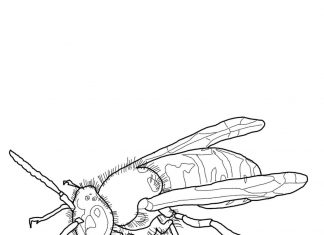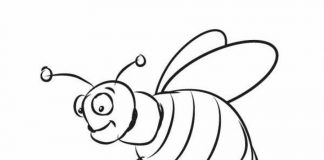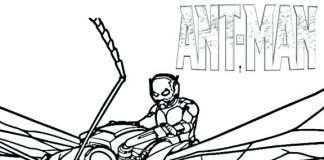The wasp is a flying social insect of the Vespidae family, often associated with pain due to their bites. The sting is a defense mechanism of the wasp. Wasps build nests from paper, which they produce by mixing saliva with torn wood. Unlike bees, wasps can sting repeatedly. Wasps are predators and play an important role in controlling populations of other insects.
Wasp Coloring Book
Information
- Classification: Wasps belong to the family Vespidae in the order Hymenoptera, which also includes bees and ants.
- Body structure: They have a narrow waist and two pairs of wings. They are usually brighter and more colorful than bees.
- Bites: Unlike bees, wasps can sting repeatedly because their stinger is not hooked and does not stay in the victim's skin.
- Predation: Wasps are predators, which means they hunt other insects and larvae to feed their offspring. As a result, they play an important role in the ecosystem by controlling pest populations.
- Community: Many species of wasps are social, forming colonies with one queen and many workers. The queen is responsible for laying eggs, while the workers build the nest, obtain food and care for the larvae.
- Sockets: Wasps make nests out of paper, which they produce by mixing torn wood fragments with their saliva. These nests can vary in size, from a few centimeters to several meters, depending on the species and the age of the colony.
- Role in the ecosystem: In addition to controlling pest populations, wasps play an important role in pollinating flowers as they search for nectar.
- Diversity of species: There are many thousands of species of wasps around the world, ranging from small solitary wasps to larger social species.
- Solitary wasps: Although many wasp species are social, there are also solitary wasps that do not form large colonies. Solitary wasps usually establish nests in the ground or in hollow tree spaces.
- Relationship to people: Wasps are often seen as a nuisance to humans because of their bites. However, their role in the ecosystem, both as predators of pests and as pollinators, makes them extremely important.
Trivia
- Recycling champions: The wasps' nests are built from "paper," which they produce on their own by mixing torn wood fragments with their saliva. This makes them among the first "recyclers" in the natural world.
- Protection from rain: Wasps build their nests with the roof sloping forward to provide protection from rain.
- Wasps and alcohol: Ripe fruits and fermenting juices can attract wasps that are capable of consuming alcohol, but which can also become "inebriated" and more aggressive.
- Communication by vibration: Wasps communicate with each other in the nest by vibrating. They are able to warn other wasps of danger in this way.
- Wasps and grapes: In many wine regions, wasps play a key role in the grape fermentation process, carrying wild yeast to the fruit.
- Lack of winter sleep: Unlike bees, most wasps do not go into winter dormancy. Instead, the queen seeks shelter and waits for spring to start a new colony.
- "False" wasps: Many insects, such as flies and butterflies, mimic the appearance of wasps to deter potential predators, even though they do not have a stinger.
- Wasps and ants: Wasps and ants are closely related. In fact, ants are considered a special kind of winged wasp that evolved to live underground or in wood.
- Wasps in medicine: Some species of wasps are used in traditional medical practices in some cultures. Their venom is believed to have analgesic and anti-inflammatory properties.
- Wasps and math: Research into how wasps build their nests has led to some discoveries in the field of geometry. The wasp's nest is an excellent example of efficient use of space.










